———————– Page 1———————–
European Parliament
2014-2019
Committee on Legal Affairs
2015/2103(INL)
31.5.2016
DRAFT REPORT
with recommendations to the Commission on Civil Law Rules on Robotics
(2015/2103(INL))
Committee on Legal Affairs
Rapporteur: Mady Delvaux
(Initiative – Rule 46 of the Rules of Procedure)
PR\ 1095387EN.doc PE582.443v01-00
EN United in diversity EN
———————– Page 2———————–
PR_INL
CONTENTS
Page
MOTION FOR A EUROPEAN PARLIAMENT RESOLUTION …………………………………….. 3
ANNEX TO THE MOTION FOR A RESOLUTION: DETAILED RECOMMENDATIONS
AS TO THE CONTENT OF THE PROPOSAL REQUESTED ……………………………………… 13
EXPLANATORY STATEMENT ……………………………………………………………………………….. 20
PE582.443v01-00 2/22 PR\ 1095387EN.doc
EN
———————– Page 3———————–
MOTION FOR A EUROPEAN PARLIAMENT RESOLUTION
with recommendations to the Commission on Civil Law Rules on Robotics
(2015/2103(INL))
The European Parliament,
– having regard to Article 225 of the Treaty on the Functioning of the European Union,
– having regard to Rules 46 and 52 of its Rules of Procedure,
– having regard to the report of the Committee on Legal Affairs and the opinions of the
Committee on Employment and Social Affairs, the Committee on the Environment,
Public Health and Food Safety, the Committee on Industry, Research and Energy and
the Committee on the Internal Market and Consumer Protection (A8-0000/2016),
Introduction
A. whereas from Mary Shelley’s Frankenstein’s Monster to the classical myth of
Pygmalion, through the story of Prague’s Golem to the robot of Karel Čapek, who
coined the word, people have fantasised about the possibility of building intelligent
machines, more often than not androids with human features;
B. whereas now that humankind stands on the threshold of an era when ever more
sophisticated robots, bots, androids and other manifestations of artificial intelligence
(“AI”) seem poised to unleash a new industrial revolution, which is likely to leave no
stratum of society untouched, it is vitally important for the legislature to consider all its
implications;
C. whereas between 2010 and 2014 the average increase in sales of robots stood at 17%
per year and in 2014 sales rose by 29%, the highest year-on-year increase ever, with
automotive parts suppliers and the electrical/electronics industry being the main drivers
of the growth; whereas annual patent filings for robotics technology have tripled over
the last decade;
D. whereas in the short to medium term robotics and AI promise to bring benefits of
efficiency and savings, not only in production and commerce, but also in areas such as
transport, medical care, education and farming, while making it possible to avoid
exposing humans to dangerous conditions, such as those faced when cleaning up
toxically polluted sites; whereas in the longer term there is potential for virtually
unbounded prosperity;
E. whereas at the same time the development of robotics and AI may result in a large part
of the work now done by humans being taken over by robots, so raising concerns about
the future of employment and the viability of social security systems if the current basis
of taxation is maintained, creating the potential for increased inequality in the
distribution of wealth and influence;
F. whereas the causes for concern also include physical safety, for example when a robot’s
code proves fallible, and the potential consequences of system failure or hacking of
PR\ 1095387EN.doc 3/22 PE582.443v01-00
EN
———————– Page 4———————–
connected robots and robotic systems at a time when increasingly autonomous
applications come into use or are impending whether it be in relation to cars and drones
or to care robots and robots used for maintaining public order and policing;
G. whereas many basic questions of data protection have already become the subject of
consideration in the general contexts of the internet and e-commerce, but whereas
further aspects of data ownership and the protection of personal data and privacy might
still need to be addressed, given that applications and appliances will communicate with
each other and with databases without humans intervening or possibly without their
even being aware of what is going on;
H. whereas the ‘soft impacts’ on human dignity may be difficult to estimate, but will still
need to be considered if and when robots replace human care and companionship, and
whereas questions of human dignity also can arise in the context of ‘repairing’ or
enhancing human beings;
I. whereas ultimately there is a possibility that within the space of a few decades AI could
surpass human intellectual capacity in a manner which, if not prepared for, could pose a
challenge to humanity’s capacity to control its own creation and, consequently, perhaps
also to its capacity to be in charge of its own destiny and to ensure the survival of the
species;
J. whereas several foreign jurisdictions, such as the US, Japan, China and South Korea,
are considering, and to a certain extent have already taken, regulatory action with
respect to robotics and AI, and whereas some Member States have also started to reflect
on possible legislative changes in order to take account of emerging applications of such
technologies;
K. whereas European industry could benefit from a coherent approach to regulation at
European level, providing predictable and sufficiently clear conditions under which
enterprises could develop applications and plan their business models on a European
scale while ensuring that the EU and its Member States maintain control over the
regulatory standards to be set, so as not to be forced to adopt and live with standards set
by others, that is to say the third states which are also at the forefront of the
development of robotics and AI;
General principles
L. whereas, until such time, if ever, that robots become or are made self-aware, Asimov’s
1
Laws must be regarded as being directed at the designers, producers and operators of
robots, since those laws cannot be converted into machine code;
M. whereas, nevertheless, a series of rules, governing in particular liability and ethics and
1 (1) A robot may not injure a human being or, through inaction, allow a human being to
come to harm. (2) A robot must obey the orders given it by human beings except
where such orders would conflict with the First Law. (3) A robot must protect its own
existence as long as such protection does not conflict with the First or Second Laws
(See Runabout, I. Asimov, 1943) and (0) A robot may not harm humanity, or, by
inaction, allow humanity to come to harm.
PE582.443v01-00 4/22 PR\ 1095387EN.doc
EN
———————– Page 5———————–
reflecting the intrinsically European and humanistic values that characterise Europe’s
contribution to society, are necessary;
N. whereas the European Union could play an essential role in establishing basic ethical
principles to be respected in the development, programming and use of robots and AI
and in the incorporation of such principles into European regulations and codes of
conduct, with the aim of shaping the technological revolution so that it serves humanity
and so that the benefits of advanced robotics and AI are broadly shared, while as far as
possible avoiding potential pitfalls;
O. whereas a gradualist, pragmatic cautious approach of the type advocated by Jean
1
Monnet should be adopted for Europe;
P. whereas it is appropriate, in view of the stage reached in the development of robotics
and AI, to start with civil liability issues and to consider whether a strict liability
approach based on who is best placed to insure is not the best starting point;
Liability
Q. whereas, thanks to the impressive technological advances of the last decade, not only
are today’s robots able to perform activities which used to be typically and exclusively
human, but the development of autonomous and cognitive features – e.g. the ability to
learn from experience and take independent decisions – has made them more and more
similar to agents that interact with their environment and are able to alter it
significantly; whereas, in such a context, the legal responsibility arising from a robot’s
harmful action becomes a crucial issue;
R. whereas a robot’s autonomy can be defined as the ability to take decisions and
implement them in the outside world, independently of external control or influence;
whereas this autonomy is of a purely technological nature and its degree depends on
how sophisticated a robot’s interaction with its environment has been designed to be;
S. whereas the more autonomous robots are, the less they can be considered simple tools in
the hands of other actors (such as the manufacturer, the owner, the user, etc.); whereas
this, in turn, makes the ordinary rules on liability insufficient and calls for new rules
which focus on how a machine can be held – partly or entirely – responsible for its acts
or omissions; whereas, as a consequence, it becomes more and more urgent to address
the fundamental question of whether robots should possess a legal status;
T. whereas, ultimately, robots’ autonomy raises the question of their nature in the light of
the existing legal categories – of whether they should be regarded as natural persons,
legal persons, animals or objects – or whether a new category should be created, with its
own specific features and implications as regards the attribution of rights and duties,
including liability for damage;
U. whereas under the current legal framework robots cannot be held liable per se for acts or
1 Cf. the Schuman Declaration (1950: “Europe will not be made all at once, or
according to a single plan. It will be built through concrete achievements which first
create a de facto solidarity.”
PR\ 1095387EN.doc 5/22 PE582.443v01-00
EN
———————– Page 6———————–
omissions that cause damage to third parties; whereas the existing rules on liability
cover cases where the cause of the robot’s act or omission can be traced back to a
specific human agent such as the manufacturer, the owner or the user and where that
agent could have foreseen and avoided the robot’s harmful behaviour; whereas, in
addition, manufacturers, owners or users could be held strictly liable for acts or
omissions of a robot if, for example, the robot were categorised as a dangerous object or
if it fell within product liability rules;
V. whereas in the scenario where a robot can take autonomous decisions, the traditional
rules will not suffice to activate a robot’s liability, since they would not make it possible
to identify the party responsible for providing compensation and to require this party to
make good the damage it has caused;
X. whereas the shortcomings of the current legal framework are apparent in the area of
contractual liability insofar as machines designed to choose their counterparts, negotiate
contractual terms, conclude contracts and decide whether and how to implement them
make the traditional rules inapplicable, which highlights the need for new, more up-to-
date ones;
Y. whereas, as regards non-contractual liability, Council Directive 85/374/EEC of 25 July
1
1985 can only cover damage caused by a robot’s manufacturing defects and on
condition that the injured person is able to prove the actual damage, the defect in the
product and the causal relationship between damage and defect (strict liability or
liability without fault);
Z. whereas, notwithstanding the scope of the Directive 85/374/EEC, the current legal
framework would not be sufficient to cover the damage caused by the new generation of
robots, insofar as they can be equipped with adaptive and learning abilities entailing a
certain degree of unpredictability in their behaviour, since these robots would
autonomously learn from their own, variable experience and interact with their
environment in a unique and unforeseeable manner;
General principles concerning the development of robotics and artificial intelligence for
civil use
1. Calls on the Commission to propose a common European definition of smart
autonomous robots and their subcategories by taking into consideration the following
characteristics of a smart robot:
o acquires autonomy through sensors and/or by exchanging data with its
environment (inter-connectivity) and trades and analyses data
o is self-learning (optional criterion)
o has a physical support
1 Council Directive 85/374/EEC of 25 July 1985 on the approximation of the laws,
regulations and administrative provisions of the Member States concerning liability
for defective products (OJ L 210, 7.8.1985, p. 29).
PE582.443v01-00 6/22 PR\ 1095387EN.doc
EN
———————– Page 7———————–
o adapts its behaviours and actions to its environment;
2. Considers that a system of registration of advanced robots should be introduced, and
calls on the Commission to establish criteria for the classification of robots with a view
to identifying the robots that would need to be registered;
3. Underlines that many robotic applications are still in an experimental phase; welcomes
the fact that more and more research projects are being funded with national and
European money; calls on the Commission and the Member States to strengthen
financial instruments for research projects in robotics and ICT; emphasises that
sufficient resources need to be devoted to the search for solutions to the social and
ethical challenges that the technological development and its applications raise;
4. Asks the Commission to foster research programmes that include a mechanism for
short-term verification of the outcomes in order to understand what real risks and
opportunities are associated with the dissemination of these technologies; calls on the
Commission to combine all its effort in order to guarantee a smoother transition for
these technologies from research to commercialisation on the market;
Ethical principles
5. Notes that the potential for empowerment through the use of robotics is nuanced by a
set of tensions or risks relating to human safety, privacy, integrity, dignity, autonomy
and data ownership;
6. Considers that a guiding ethical framework for the design, production and use of robots
is needed to complement the legal recommendations of the report and the existing
national and Union acquis; proposes, in the annex to the resolution, a framework in the
form of a charter consisting of a code of conduct for robotics engineers, of a code for
research ethics committees when reviewing robotics protocols and of model licences for
designers and users;
7. Points out that the guiding ethical framework should be based on the principles of
beneficence, non-maleficence and autonomy, as well as on the principles enshrined in
the EU Charter of Fundamental Rights, such as human dignity and human rights,
equality, justice and equity, non-discrimination and non-stigmatisation, autonomy and
individual responsibility, informed consent, privacy and social responsibility, and on
existing ethical practices and codes;
A European Agency
8. Calls for the creation of a European Agency for robotics and artificial intelligence in
order to provide the technical, ethical and regulatory expertise needed to support the
relevant public actors, at both EU and Member State level, in their efforts to ensure a
timely and well-informed response to the new opportunities and challenges arising from
the technological development of robotics;
9. Considers that the potential of robotics use and the present investment dynamics justify
the European Agency being equipped with a proper budget and being staffed with
regulators and external technical and ethical experts dedicated to the cross-sectorial
PR\ 1095387EN.doc 7/22 PE582.443v01-00
EN
———————– Page 8———————–
and multidisciplinary monitoring of robotics-based applications, identifying standards
for best practice, and, where appropriate, recommending regulatory measures, defining
new principles and addressing potential consumer protection issues and systematic
challenges; asks the Commission and the European Agency to report to the European
Parliament on the latest developments in robotics on an annual basis;
Intellectual property rights and the flow of data
10. Notes that there are no legal provisions that specifically apply to robotics, but that
existing legal regimes and doctrines can be readily applied to robotics while some
aspects appear to need specific consideration; calls on the Commission to come forward
with a balanced approach to intellectual property rights when applied to hardware and
software standards, and codes that protect innovation and at the same time foster
innovation; calls on the Commission to elaborate criteria for an ‘own intellectual
creation’ for copyrightable works produced by computers or robots;
11. Calls on the Commission and the Member States to ensure that, in the development of
any EU policy on robotics, privacy and data protection guarantees are embedded in line
with the principles of necessity and proportionality; calls, in this regard, on the
Commission to foster the development of standards for the concepts of privacy by
design and privacy by default, informed consent and encryption;
12. Points out that the use of personal data as a ‘currency’ with which services can be
‘bought’ raises new issues in need of clarification; stresses that the use of personal data
as a ‘currency’ must not lead to a circumvention of the basic principles governing the
right to privacy and data protection;
Standardisation, safety and security
13. Calls on the Commission to continue to work on the international harmonisation of
technical standards, in particular together with the European Standardisation
Organisations and the International Standardisation Organisation, in order to avoid
fragmentation of the internal market and to meet consumers’ concerns; asks the
Commission to analyse existing European legislation with a view to checking the need
for adaption in light of the development of robotics and artificial intelligence;
14. Emphasises that testing robots in real-life scenarios is essential for the identification and
assessment of the risks they might entail, as well as of their technological development
beyond a pure experimental laboratory phase; underlines, in this regard, that testing of
robots in real-life scenarios, in particular in cities and on roads, raises numerous
problems and requires an effective monitoring mechanism; calls on the Commission to
draw up uniform criteria across all Member States which individual Member States
should use in order to identify areas where experiments with robots are permitted;
Autonomous vehicles
15. Considers that the automotive sector is in most urgent need of European and global
rules to ensure the cross-border development of automated vehicles so as to fully exploit
their economic potential and benefit from the positive effects of technological trends;
emphasises that fragmented regulatory approaches would hinder implementation and
PE582.443v01-00 8/22 PR\ 1095387EN.doc
EN
———————– Page 9———————–
jeopardise European competitiveness; notes that although current private internationa l
law rules on traffic accidents applicable within the EU do not need urgent modification
to accommodate the development of autonomous vehicles, simplifying the current dual
system for defining applicable law (based on Regulation (EC) No 864/2007 of the
1
European Parliament and of the Council and the 1971 Hague Convention on the law
applicable to traffic accidents) would improve legal certainty and limit possibilities for
forum shopping;
Care robots
16. Points out that human contact is one of the fundamental aspects of human care; believes
that replacing the human factor with robots could dehumanise caring practices;
Medical robots
17. Underlines the importance of appropriate training and preparation for doctors and care
assistants in order to secure the highest degree of professional competence possible, as
well as to protect patients’ health; underlines the need to define the minimum
professional requirements that a surgeon must meet in order to be allowed to use
surgical robots; emphasises the special importance of training for users to allow them to
familiarise themselves with the technological requirements in this field; draws attention
to the rising trend towards self-diagnosis using a mobile robot which makes diagnoses
and might take over the role of a doctor;
Human repair and enhancement
18. Notes the great potential of robotics in the field of repairing and compensating for
damaged organs and human functions, but also the complex questions raised in
particular by the possibilities of human enhancement; asks for the establishment of
committees on robot ethics in hospitals and other health care institutions tasked with
considering and assisting in resolving unusual, complicated ethical problems involving
issues that affect the care and treatment of patients; calls on the Commission and the
Member States to develop guidelines to aid in the establishment and functioning of
such committees;
Drones (RPAS)
19. Stresses the importance of a European framework for remotely piloted aircraft systems
(RPAS) to protect the safety, security and privacy of EU citizens, and calls on the
Commission for a follow-up to the recommendations of the European Parliament
resolution of 29 October 2015 on safe use of remotely piloted aircraft systems (RPAS),
2
known as unmanned aerial vehicles (UAVs), in the field of civil aviation ;
Education and employment forecast
1 Regulation (EC) No 864/2007 of the European Parliament and of the Council of 11
July 2007 on the law applicable to non-contractual obligations (Rome II) (OJ L 199,
31.7.2007, p. 40).
2 Texts adopted, P8_TA(2015)0390.
PR\ 1095387EN.doc 9/22 PE582.443v01-00
EN
———————– Page 10———————–
20. Draws attention to the Commission’s forecast that by 2020 Europe might be facing a
shortage of up to 825 000 ICT professionals and that 90 % of jobs will require at least
basic digital skills; welcomes the Commission’s initiative of proposing a roadmap for
the possible use and revision of a Digital Competence framework and descriptors of
Digital Competences for all levels of learners;
21. Considers that getting more young women interested in a digital career and placing
more women in digital jobs would benefit the digital industry, women themselves and
Europe’s economy; calls on the Commission and the Member States to launch initiatives
in order to support women in ICT and to boost their e-skills;
22. Calls on the Commission to start monitoring job trends more closely, with a special
focus on the creation and loss of jobs in the different fields/areas of qualification in
order to know in which fields jobs are being created and those in which jobs are being
destroyed as a result of the increased use of robots;
23. Bearing in mind the effects that the development and deployment of robotics and AI
might have on employment and, consequently, on the viability of the social security
systems of the Member States, consideration should be given to the possible need to
introduce corporate reporting requirements on the extent and proportion of the
contribution of robotics and AI to the economic results of a company for the purpose of
taxation and social security contributions; takes the view that in the light of the possible
effects on the labour market of robotics and AI a general basic income should be
seriously considered, and invites all Member States to do so;
Liability
24. Considers that robots’ civil liability is a crucial issue which needs to be addressed at EU
level so as to ensure the same degree of transparency, consistency and legal certainty
throughout the European Union for the benefit of consumers and businesses alike;
25. Asks the Commission to submit, on the basis of Article 114 of the Treaty on the
Functioning of the European Union, a proposal for a legislative instrument on legal
questions related to the development of robotics and artificial intelligence foreseeable in
the next 10-15 years, following the detailed recommendations set out in the annex
hereto; further calls on the Commission, once technological developments allow the
possibility for robots whose degree of autonomy is higher than what is reasonably
predictable at present to be developed, to propose an update of the relevant legislation in
due time;
26. Considers that, whatever legal solution it applies to robots’ liability in cases other than
those of damage to property, the future legislative instrument should in no way restrict
the type or the extent of the damages which may be recovered, nor should it limit the
forms of compensation which may be offered to the aggrieved party, on the sole
grounds that damage is caused by a non-human agent;
27. Considers that the future legislative instrument should provide for the application of
strict liability as a rule, thus requiring only proof that damage has occurred and the
establishment of a causal link between the harmful behaviour of the robot and the
damage suffered by the injured party;
PE582.443v01-00 10/22 PR\ 1095387EN.doc
EN
———————– Page 11———————–
28. Considers that, in principle, once the ultimately responsible parties have been identified,
their liability would be proportionate to the actual level of instructions given to the
robot and of its autonomy, so that the greater a robot’s learning capability or autonomy
is, the lower other parties’ responsibility should be, and the longer a robot’s ‘education’
has lasted, the greater the responsibility of its ‘teacher’ should be; notes, in particular,
that skills resulting from ‘education’ given to a robot should be not confused with skills
depending strictly on its self-learning abilities when seeking to identify the person to
whom the robot’s harmful behaviour is actually due;
29. Points out that a possible solution to the complexity of allocating responsibility for
damage caused by increasingly autonomous robots could be an obligatory insurance
scheme, as is already the case, for instance, with cars; notes, nevertheless, that unlike
the insurance system for road traffic, where the insurance covers human acts and
failures, an insurance system for robotics could be based on the obligation of the
producer to take out an insurance for the autonomous robots it produces;
30. Considers that, as is the case with the insurance of motor vehicles, such an insurance
system could be supplemented by a fund in order to ensure that reparation can be made
for damage in cases where no insurance cover exists; calls on the insurance industry to
develop new products that are in line with the advances in robotics;
31. Calls on the Commission, when carrying out an impact assessment of its future
legislative instrument, to explore the implications of all possible legal solutions, such
as:
a) establishing a compulsory insurance scheme whereby, similarly to what already
happens with cars, producers or owners of robots would be required to take out
insurance cover for the damage potentially caused by their robots;
b) ensuring that a compensation fund would not only serve the purpose of
guaranteeing compensation if the damage caused by a robot was not covered by
an insurance – which would in any case remain its primary goal – but also that of
allowing various financial operations in the interests of the robot, such as
investments, donations or payments made to smart autonomous robots for their
services, which could be transferred to the fund;
c) allowing the manufacturer, the programmer, the owner or the user to benefit from
limited liability insofar as smart autonomous robots would be endowed with a
compensation fund – to which all parties could contribute in varying proportions –
and damage to property could only be claimed for within the limits of that fund,
other types of damage not being subject to such limits;
d) deciding whether to create a general fund for all smart autonomous robots or to
create an individual fund for each and every robot category, and whether a
contribution should be paid as a one-off fee when placing the robot on the market
or whether periodic contributions should be paid during the lifetime of the robot;
e) ensuring that the link between a robot and its fund would be made visible by an
individual registration number appearing in a specific EU register, which would
allow anyone interacting with the robot to be informed about the nature of the
PR\ 1095387EN.doc 11/22 PE582.443v01-00
EN
———————– Page 12———————–
fund, the limits of its liability in case of damage to property, the names and the
functions of the contributors and all other relevant details;
f) creating a specific legal status for robots, so that at least the most sophisticated
autonomous robots could be established as having the status of electronic persons
with specific rights and obligations, including that of making good any damage
they may cause, and applying electronic personality to cases where robots make
smart autonomous decisions or otherwise interact with third parties
independently;
International aspects
32. Notes the need also to consider amendments to international agreements such as the
Vienna Convention on Road Traffic and the Hague Traffic Accident Convention;
33. Strongly encourages international cooperation in setting regulatory standards under the
auspices of the United Nations;
1
34. Points out that the restrictions and conditions laid down in the ‘Dual use regulation’ on
the trade in dual-use items – goods, software and technology that can be used for both
civilian and military applications and/or can contribute to the proliferation of weapons
of mass destruction – should apply to applications of robotics as well;
Final aspects
35. Requests the Commission to submit, on the basis of Article 225 of the Treaty on the
Functioning of the European Union, a proposal for a directive on civil law rules on
robotics, following the detailed recommendations set out in the annex hereto;
36. Confirms that the recommendations respect fundamental rights and the principle of
subsidiarity;
37. Considers that the requested proposal will not have any financial implications;
38. Instructs its President to forward this resolution and the accompanying detailed
recommendations to the Commission and the Council.
1 Council Regulation (EC) No 428/2009 setting up a Community regime for the control
of exports, transfer, brokering and transit of dual-use items (OJ L 341, 29.5.2009, p.
1).
PE582.443v01-00 12/22 PR\ 1095387EN.doc
EN
———————– Page 13———————–
ANNEX TO THE MOTION FOR A RESOLUTION:
DETAILED RECOMMENDATIONS AS TO THE CONTENT OF THE PROPOSAL
REQUESTED
Definition and classification of ‘smart robots’
A common European definition for ‘smart’ autonomous robots should be established, where
appropriate including definitions of its subcategories, taking into consideration the following
characteristics:
The capacity to acquire autonomy through sensors and/or by exchanging data with its
environment (inter-connectivity) and the analysis of those data
The capacity to learn through experience and interaction
The form of the robot’s physical support
The capacity to adapt its behaviours and actions to its environment
Registration of ‘smart robots’
For the purposes of traceability and in order to facilitate the implementation of further
recommendations, a system of registration of advanced robots should be introduced, based on
the criteria established for the classification of robots. The system of registration and the
register should be Union-wide, covering the internal market, and should be managed by an
EU Agency for Robotics and Artificial Intelligence.
Civil law liability
Any chosen legal solution applied to robots’ liability in cases other than those of damage to
property should in no way restrict the type or the extent of the damages which may be
recovered, nor should it limit the forms of compensation which may be offered to the
aggrieved party on the sole grounds that damage is caused by a non-human agent.
The future legislative instrument should provide for the application as a rule of strict liability
to damage caused by ‘smart robots’, requiring only proof of a causal link between the harmful
behaviour of the robot and the damage suffered by the injured party.
An obligatory insurance scheme, which could be based on the obligation of the producer to
take out insurance for the autonomous robots it produces, should be established.
The insurance system should be supplemented by a fund in order to ensure that damages can
be compensated for in cases where no insurance cover exists.
Interoperability, access to code and intellectual property rights
The interoperability of network-connected autonomous robots that interact with each other
should be ensured. Access to the source code should be available when needed in order to
investigate accidents and damage caused by ‘smart robots’.
PR\ 1095387EN.doc 13/22 PE582.443v01-00
EN
———————– Page 14———————–
Criteria for ‘intellectual creation’ for copyrightable works produced by computers or robots
should be drawn up.
Disclosure of use of robots and artificial intelligence by undertakings
Undertaking s should be obliged to disclose:
– the number of ‘smart robots’ they use,
– the savings made in social security contributions through the use of robotics in place
of human personnel,
– an evaluation of the amount and proportion of the revenue of the undertaking that
results from the use of robotics and artificial intelligence.
Charter on Robotics
The Commission, when proposing legislation relating to robotics, should take into account the
principles enshrined in the following Charter on Robotics.
CHARTER ON ROBOTICS
The proposed code of ethical conduct in the field of robotics will lay the groundwork for the
identification, oversight and compliance with fundamental ethical principles from the design
and development phase.
The framework must be designed in a reflective manner that allows individual adjustments to
be made on a case-by-case basis in order to assess whether a given behaviour is right or
wrong in a given situation and to take decisions in accordance with a pre-set hierarchy of
values.
The code should not replace the need to tackle all major legal challenges in this field, but
should have a complementary function. It will, rather, facilitate the ethical categorisation of
robotics, strengthen the responsible innovation efforts in this field and address public
concerns.
Special emphasis should be placed on the research and development phases of the relevant
technological trajectory (design process, ethics review, audit controls, etc.). It should aim to
address the need for compliance by researchers, practitioners, users and designers with ethical
standards, but also introduce a procedure for devising a way to resolve the relevant ethical
dilemmas and to allow these systems to function in an ethically responsible manner.
CODE OF ETHICAL CONDUCT FOR ROBOTICS ENGINEERS
PREAMBLE
• The Code of Conduct invites all researchers and designers to act responsibly and with
absolute consideration for the need to respect the dignity, privacy and safety of humans.
PE582.443v01-00 14/22 PR\ 1095387EN.doc
EN
———————– Page 15———————–
• The Code asks for close cooperation among all disciplines in order to ensure that robotics
research is undertaken in the European Union in a safe, ethical and effective manner.
• The Code of Conduct covers all research and development activities in the field of robotics.
• The Code of Conduct is voluntary and offers a set of general principles and guidelines for
actions to be taken by all stakeholders.
• Robotics research funding bodies, research organisations, researchers and ethics committees
are encouraged to consider, at the earliest stages, the future implications of the technologies or
objects being researched and to develop a culture of responsibility with a view to the
challenges and opportunities that may arise in the future.
• Public and private robotics research funding bodies should request that a risk assessment be
performed and presented along with each submission of a proposal for funding for robotics
research. Such a code should consider humans, not robots, as the responsible agents.
Researchers in the field of robotics should commit themselves to the highest ethical and
professional conduct and abide by the following principles:
Beneficence – robots should act in the best interests of humans;
Non-maleficence – the doctrine of ‘first, do no harm’, whereby robots should not harm a
human;
Autonomy – the capacity to make an informed, un-coerced decision about the terms of
interaction with robots;
Justice – fair distribution of the benefits associated with robotics and affordability of
homecare and healthcare robots in particular.
Fundamental Rights
Robotics research activities should respect fundamental rights and be conducted in the
interests of the well-being of individuals and society in their design, implementation,
dissemination and use. Human dignity – both physical and psychological – is always to be
respected.
Precaution
Robotics research activities should be conducted in accordance with the precautionary
principle, anticipating potential safety impacts of outcomes and taking due precautions,
proportional to the level of protection, while encouraging progress for the benefit of society
and the environment.
Inclusiveness
Robotics engineers guarantee transparency and respect for the legitimate right of access to
information by all stakeholders. Inclusiveness allows for participation in decision-making
processes by all stakeholders involved in or concerned by robotics research activities.
PR\ 1095387EN.doc 15/22 PE582.443v01-00
EN
———————– Page 16———————–
Accountability
Robotics engineers should remain accountable for the social, environmental and human health
impacts that robotics may impose on present and future generations.
Safety
Robot designers should consider and respect people’s physical wellbeing, safety, health and
rights. A robotics engineer must preserve human wellbeing, while also respecting human
rights, and disclose promptly factors that might endanger the public or the environment.
Reversibility
Reversibility, being a necessary condition of controllability, is a fundamental concept when
programming robots to behave safely and reliably. A reversibility model tells the robot which
actions are reversible and how to reverse them if they are. The ability to undo the last action
or a sequence of actions allows users to undo undesired actions and get back to the ‘good’
stage of their work.
Privacy
The right to privacy must always be respected. A robotics engineer should ensure that private
information is kept secure and only used appropriately. Moreover, a robotics engineer should
guarantee that individuals are not personally identifiable, aside from exceptional
circumstances and then only with clear, unambiguous informed consent. Human informed
consent should be pursued and obtained prior to any man-machine interaction. As such,
robotics designers have a responsibility to develop and follow procedures for valid consent,
confidentiality, anonymity, fair treatment and due process. Designers will comply with any
requests that any related data be destroyed, and removed from any datasets.
Maximising benefit and minimising harm
Researchers should seek to maximise the benefits of their work at all stages, from inception
through to dissemination. Harm to research participants/human subject/an experiment, trial, or
study participant or subject must be avoided. Where risks arise as an unavoidable and integral
element of the research, robust risk assessment and management protocols should be
developed and complied with. Normally, the risk of harm should be no greater than that
encountered in ordinary life, i.e. people should not be exposed to risks greater than or
additional to those to which they are exposed in their normal lifestyles. The operation of a
robotics system should always be based on a thorough risk assessment process, which should
be informed by the precautionary and proportionality principles.
CODE FOR RESEARCH ETHICS COMMITTEES (REC)
Principles
Independence
The ethics review process should be independent of the research itself. This principle
highlights the need to avoid conflicts of interest between researchers and those reviewing the
PE582.443v01-00 16/22 PR\ 1095387EN.doc
EN
———————– Page 17———————–
ethics protocol, and between reviewers and organisational governance structures.
Competence
The ethics review process should be conducted by reviewers with appropriate expertise,
taking into account the need for careful consideration of the range of membership and
ethics-specific training of RECs.
Transparency and accountability
The review process should be accountable and open to scrutiny. RECs need to recognise their
responsibilities and to be appropriately located within organisational structures that give
transparency to the REC operation and procedures to maintain and review standards.
The role of a Research Ethics Committee
A REC is normally responsible for reviewing all research involving human participants
conducted by individuals employed within or by the institution concerned; ensuring that
ethics review is independent, competent and timely; protecting the dignity, rights and welfare
of research participants; considering the safety of the researcher(s); considering the legitimate
interests of other stakeholders; making informed judgements of the scientific merit of
proposals; and making informed recommendations to the researcher if the proposal is found to
be wanting in some respect.
The constitution of a Research Ethics Committee
A REC should normally: be multidisciplinary; include both men and women; be comprised of
members with a broad experience of and expertise in the area of robotics research. The
appointment mechanism should ensure that the committee members provide an appropriate
balance of scientific expertise, philosophical, legal or ethical backgrounds, and lay views, and
that they include at least one member with specialist knowledge in ethics, users of specialist
health, education or social services where these are the focus of research activities, and
individuals with specific methodological expertise relevant to the research they review; and
they must be so constituted that conflicts of interest are avoided.
Monitoring
All research organisations should establish appropriate procedures to monitor the conduct of
research which has received ethics approval until it is completed, and to ensure continuing
review where the research design anticipates possible changes over time that might need to be
addressed. Monitoring should be proportionate to the nature and degree of risk associated
with the research. Where a REC considers that a monitoring report raises significant concerns
about the ethical conduct of the study, it should request a full and detailed account of the
research for full ethics review. Where it is judged that a study is being conducted in a way
that is unethical, it should consider the withdrawal of its approval and require that the research
should be suspended or discontinued.
LICENCE FOR DESIGNERS
• You should take into account the European values of dignity, freedom and justice before,
PR\ 1095387EN.doc 17/22 PE582.443v01-00
EN
———————– Page 18———————–
during and after the process of design, development and delivery of such technologies
including the need not to harm, injure, deceive or exploit (vulnerable) users.
• You should introduce trustworthy system design principles across all aspects of a robot’s
operation, for both hardware and software design, and for any data processing on or off the
platform for security purposes.
• You should introduce privacy by design features so as to ensure that private information is
kept secure and only used appropriately.
• You should integrate obvious opt-out mechanisms (kill switches) that should be consistent
with reasonable design objectives.
• You should ensure that a robot operates in a way that is in accordance with local, national
and international ethical and legal principles.
• You should ensure that the robot’s decision-making steps are amenable to reconstruction
and traceability.
• You should ensure that maximal transparency is required in the programming of robotic
systems, as well as predictability of robotic behaviour.
• You should analyse the predictability of a human-robot system by considering uncertainty in
interpretation and action and possible robotic or human failures.
• You should develop tracing tools at the robot’s design stage. These tools will facilitate
accounting and explanation of robotic behaviour, even if limited, at the various levels
intended for experts, operators and users.
• You should draw up design and evaluation protocols and join with potential users and
stakeholders when evaluating the benefits and risks of robotics, including cognitive,
psychological and environmental ones.
• You should ensure that robots are identifiable as robots when interacting with humans.
• You should safeguard the safety and health of those interacting and coming in touch with
robotics, given that robots as products should be designed using processes which ensure their
safety and security. A robotics engineer must preserve human wellbeing while also respecting
human rights and may not deploy a robot without safeguarding the safety, efficacy and
reversibility of the operation of the system.
• You should obtain a positive opinion from a Research Ethics Committee before testing a
robot in a real environment or involving humans in its design and development procedures.
LICENCE FOR USERS
• You are permitted to make use of a robot without risk or fear of physical or psychological
harm.
• You should have the right to expect a robot to perform any task for which it has been
PE582.443v01-00 18/22 PR\ 1095387EN.doc
EN
———————– Page 19———————–
explicitly designed.
• You should be aware that any robot may have perceptual, cognitive and actuation
limitations.
• You should respect human frailty, both physical and psychological, and the emotional needs
of humans.
• You should take the privacy rights of individuals into consideration, including the
deactivation of video monitors during intimate procedures.
• You are not permitted to collect, use or disclose personal information without the explicit
consent of the data subject.
• You are not permitted to use a robot in any way that contravenes ethical or legal principles
and standards.
• You are not permitted to modify any robot to enable it to function as a weapon.
PR\ 1095387EN.doc 19/22 PE582.443v01-00
EN
———————– Page 20———————–
EXPLANATORY STATEMENT
Background
Under Annex VI to the Rules of Procedure, the Committee on Legal Affairs is responsible,
inter alia, for civil and commercial law, company law, intellectual property law and the
interpretation, application of international law, in so far as the European Union is affected,
and ethical questions related to new technologies. The development of robotics and artificial
intelligence raises legal and ethical issues that are clearly linked to all these areas and which
require a prompt intervention at EU level. While it will be up the Commission to eventually
present one or more legislative proposals related to robotics and artificial intelligence, the
European Parliament has decided to pave the way for such initiatives using its rights under
Article 225 of the Treaty on the Functioning of the European Union and Rule 46 of its Rules
of Procedure.
As a result, on the 20 January 2015 the JURI Committee decided to establish a Working
Group (WG) on legal questions related to the development of Robotics and Artificial
Intelligence (AI) in the European Union. The WG primarily aimed at drafting civil law rules
linked to this subject-matter.
Besides Members of the Committee on Legal Affairs the Working Group also included
Members representing the Committee on Industry, Research and Energy (ITRE), the
Committee on the Internal Market and Consumer Protection (IMCO) and the Committee on
Employment and Social Affairs (EMPL).
The WG consulted experts from very diverse backgrounds, receiving important contributions
which are included in this resolution.
Generalities
Robotics and AI have become one of the most prominent technological trends of our century.
The fast increase of their use and development brings new and difficult challenges to our
society. The road from the industrial sector to the civil society environment obliges a different
approach on these technologies, as robots and AI would increase their interaction with
humans in very diverse fields.
The JURI Committee believes that the risks posed by these new interactions should be tackled
urgently, ensuring that a set of core fundamental values is translated into every stage of
contact between robots, AI and humans. In this process, special emphasis should be given to
human safety, privacy, integrity, dignity and autonomy.
Other important aspects addressed in this resolution are: standardisation, intellectual property
rights, data ownership, employment and liability. It is crucial that regulation provides
predictable and sufficiently clear conditions to incentivise European innovation in the area of
robotics and AI.
PE582.443v01-00 20/22 PR\ 1095387EN.doc
EN
———————– Page 21———————–
Legal basis and subsidiarity
The action by the Commission in order to adapt the existing legislation to the reality of robots
and artificial intelligence should be based on Article 114 TFEU. According to Article 5 (3)
TEU, the principle of subsidiarity provides that the Union shall act only if and in so far as the
objectives of the proposed action cannot be sufficiently achieved by the Member States, either
at central level or at regional and local level, but can rather, by reason of the scale or effects of
the proposed action, be better achieved at Union level. The development of robotics is
currently happening in the entire Union. In reaction to this innovation, Member States are
developing different national legislations. These discrepancies are expected to create obstacles
for an effective development of robotics. Due to the fact that this technology has cross-border
implications, the best legislative option is a European one.
General and ethical principles
The resolution establishes general as well as ethical principles concerning the development of
robotics and AI for civil use. First, in order to properly address this development, a common
definition of smart autonomous robots is fundamental. Furthermore, research in robotics and
ICT as well as in the implications of their dissemination should be strengthened.
Second, in order to address the ethical principles, a Charter on Robotics is annexed to this
resolution. This Charter consists of a Code of Ethical Conduct for Robotics Engineers, a Code
for Research Ethics Committees and Licenses for Designers and Users. The proposed
framework is in full compliance with the EU Charter of Fundamental Rights.
Moreover, the creation of a European Agency for robotics and AI is suggested. This agency
should provide the necessary technical, ethical and regulatory expertise to support the relevant
public actors.
Intellectual property rights, data protection and data ownership
The resolution calls on the Commission to come forward with a balanced approach to
intellectual property rights when applied to hardware and software standards and codes that
protect innovation and at the same time foster innovation. Moreover, the elaboration of
criteria for “own intellectual creation” for copyrightable works produced by computers or
robots is demanded.
The current insufficient legal framework on data protection and ownership is of great concern
due to the (expected massive) flow of data arising from the use of robotics and AI.
Standardisation, safety and security
The increasing use of robots and AI requires European standardisation in order to avoid
discrepancies between Member States and fragmentation of the European Union internal
market.
Moreover, consumer concerns over safety and security related to the use of robots and AI
need to be addressed. This resolution specifically underlines that testing robots in real-life
scenarios is essential for the identification and assessment of the risks they might entail.
PR\ 1095387EN.doc 21/22 PE582.443v01-00
EN
———————– Page 22———————–
Rules for specific use of robots and AI
The resolution includes provisions to be applied to specific types of robots. Individual rules
should be adopted for autonomous vehicles, care robots, medical robots, human repair and
enhancement, as well as drones (RPAS).
Rules on Liability
Risks that may occur are inherently linked to the use of autonomous machine in our society.
A robot’s behaviour potentially has civil law implications, both in terms of contractual and of
non-contractual liability. Thus clarification of responsibility for the actions of robots and
eventually of the legal capacity and/or status of robots an AI is needed in order to ensure
transparency and legal certainty for producers and consumers across the European Union.
The Commission is called on to carry out an impact assessment of its future legislative
instruments to explore the implications of all possible legal solutions, such as, among others,
the establishment of a compulsory insurance scheme and a compensation fund.
Robotics and AI in the social context
Increasing communication and interaction with robots have the potential to profoundly impact
physical and moral relations in our society. This is especially the case for care robots towards
which particularly vulnerable people can develop emotional feelings and attachment, thus
causing concerns over human dignity and other moral values.
Robots and AI already influence education and employment. Against this background a close
monitoring of job trends is necessary in order to avoid undesirable repercussions on the
employment market.
International aspects
In view of the development of robotics and AI all over the world, consideration should be
given and initiatives taken to amend existing relevant international agreements when needed
or to draft new instruments with the objective of introducing specific references to robotics
and AI. International cooperation in this field is very much desirable.
PE582.443v01-00 22/22 PR\ 1095387EN.doc
EN


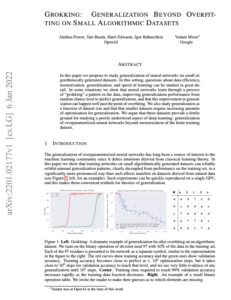

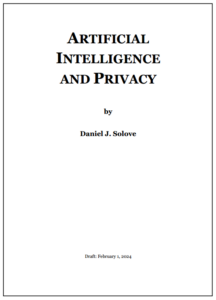

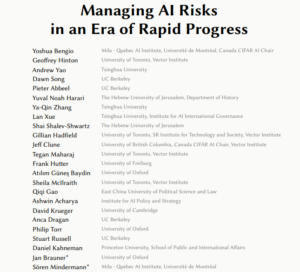
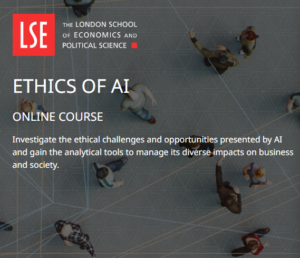

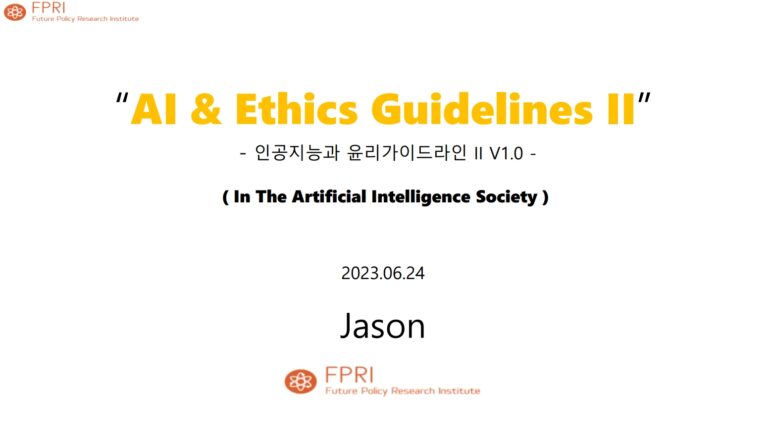

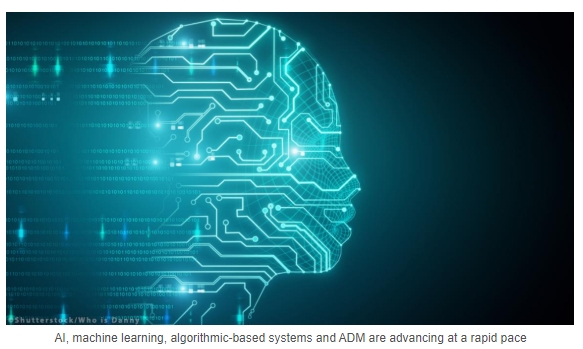


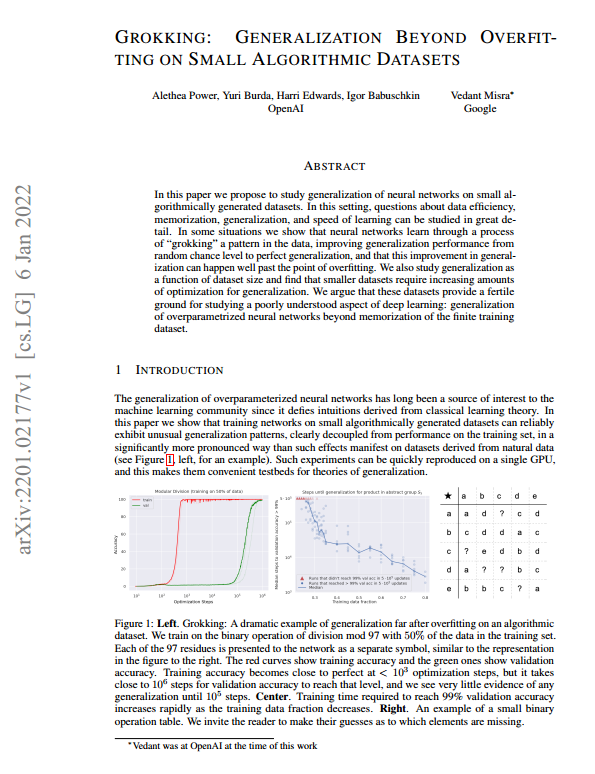
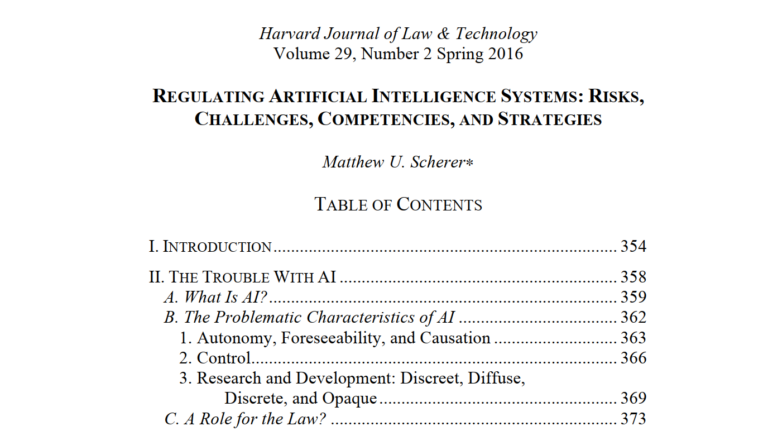
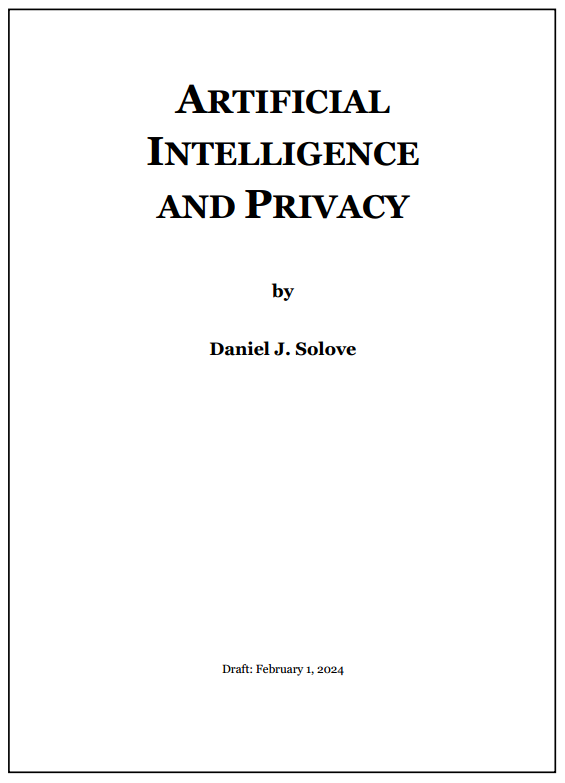


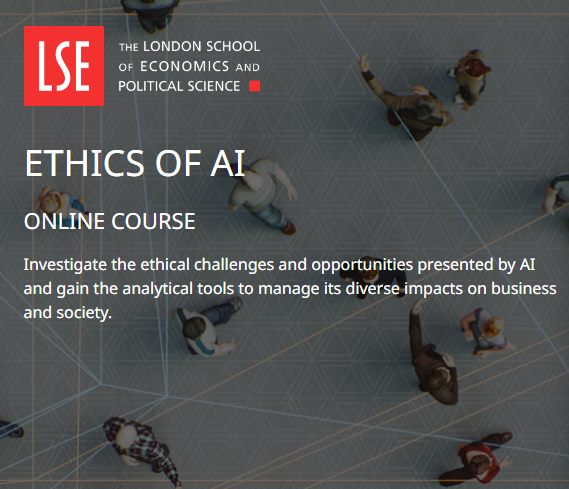
+ There are no comments
Add yours